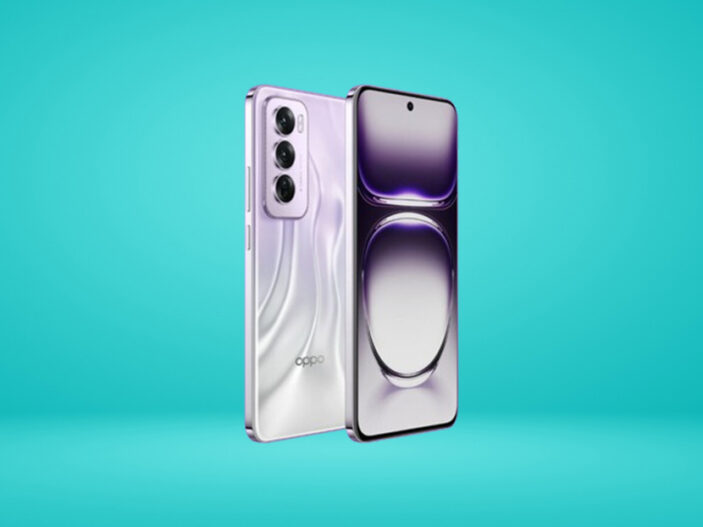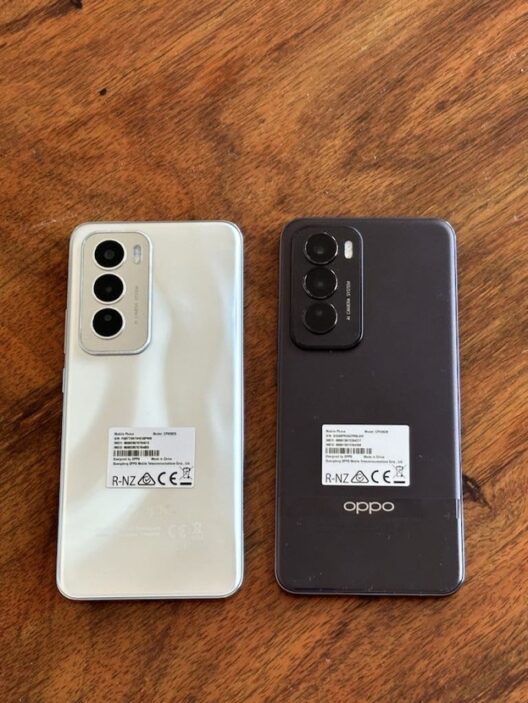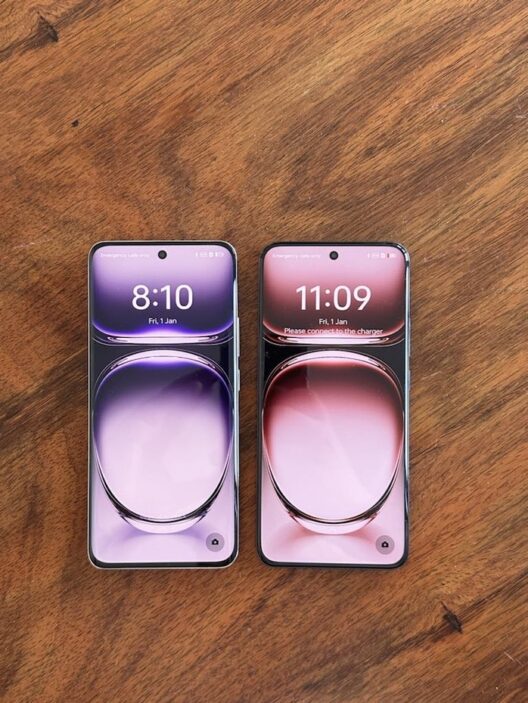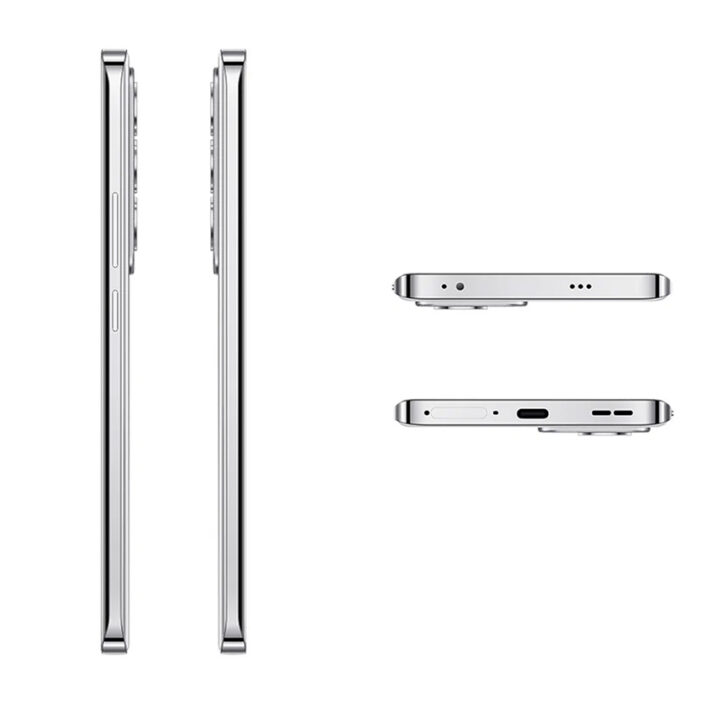
Oppo has steadily positioned itself as quite the competitor in the crowded Android smartphone market of late. Consistently delivering devices that offer premium features at a fraction of the cost, 2024’s Reno series exemplifies this philosophy with the Reno 12 and 12 Pro aiming to strike a balance between features, performance, and price.
Both phones come packed with notable specs, but as with any mid-range device, it isn’t without compromise. In this review, we’ll explore how these two models priced at A$799 and A$999 respectively, stack up and if they offer the best value for your money.
Design and Build Quality
At a look, the Oppo Reno 12 and 12 Pro look mostly identical. The most significant distinction however lies in the camera setup, with the Pro model boasting a telephoto lens and an enhanced selfie camera.

The back panel of both phones is crafted from plastic, featuring a matte finish. Pictured colours include the Nebula Black and Astro Silver, although the latter option looks a little closer to white. Despite their similarities the Reno 12 is slimmer, with the front and back panels curving gently into the frame, giving it a more streamlined look.
In contrast, the Reno 12 Pro has a flatter, wider frame, which may appeal to those who prefer a more substantial feel in hand. Truth be told, you likely wouldn’t notice if you didn’t look too hard. The IP65 ingress protection also wards off any dust and water, which is a welcome feature and an essential in a modern device.
The overall design fits pretty fairly within the current offering of mid-range devices which finds itself in a bit of an “if it ain’t broke, don’t fix it” era. Ultimately it’s functional and both devices feel good in the hand, but lack the solid weight and premium feel. For the price though, it’s a fair trade.
Display and Audio
Both the Reno 12 and 12 Pro feature a 6.7-inch AMOLED display with a 1080p resolution and a 120Hz refresh rate. The non-Pro version’s screen features Gorilla Glass 7i while the Pro model opts for Gorilla Glass Victus 2, though despite this difference the screens deliver basically identical visual experiences, and I was otherwise surprised to realise after use that there was no difference at all.
The 120Hz refresh rate also means that scrolling is smooth and feels responsive, which is usually something that irks me on lower-priced devices. Be sure, there is no lag here, however.

Both phones come equipped with stereo speakers with decent volume levels, though bass-heavy tracks can get muffled. I would be surprised if most users weren’t using headphones anyway, but the speakers are more than serviceable for videos, though the fidelity can wane at high volumes. This wasn’t a huge deal breaker as regular usage for video streaming rarely required me to pump the volume.
Fingerprint Reader
Both models feature an under-display fingerprint reader which works reliably on both models. My only issue was that it is positioned slightly too low on the screen making it a bit awkward to use. Placement more centrally would make this a much more attractive feature and it is a bit of an odd choice, though facial recognition is my preference so I may be an outlier on that.
Storage Options
When it comes to storage, the Reno 12 offers 256GB, while the Pro model doubles that with 512GB. I’m pleasantly surprised by the Pro’s storage and in conjunction with the camera features it stands out as the specs that will likely push many users towards that model for that little bit extra.
Software and Features
Both the Reno 12 and 12 Pro run on Android 14.1 with Oppo’s ColorOS UI. The latest software update means that users have access to a host of handy AI-driven features like text summarization and voice transcription and an AI background eraser for photos.
There are probably some of the more surprisingly exciting and useful additions on the devices and those that I was most impressed with. The photo AI is probably the biggest draw and proves that AI could be a big equaliser in the current phone game.
Performance
Under the hood, both phones are powered by the MediaTek Dimensity 7300 chipset. This processor offers decent performance for everyday tasks, and despite its mid-range target the devices never felt underpowered by any means.
Battery Life and Charging
One of the standout features of both phones is their impressive battery life. With a 5000mAh battery, I clocked up easily 15 hours of use on a single charge, making them reliable companions for long days. The 80W SuperVOOC charging technology is also equally impressive, taking the phone from 0 to 67% in just 30 minutes, and a full charge in about 45 minutes.
Camera
Cameras are probably one of the main features people look for in phones these days, and the camera setup is where the Pro model really distinguishes itself. The Reno 12 features a 50MP main camera, an 8MP ultrawide lens, and a 2MP macro sensor, alongside a 32MP front-facing camera.
The Reno 12 Pro, on the other hand, steps up with a 50MP main camera, a 50MP 2x telephoto zoom, an 8MP ultra-wide camera and a 50MP selfie camera.
The additional zoom and improved selfie camera on the Pro model offer more versatility, but both models deliver respectable performance for the price. The Pro however certainly justifies it’s price increase with features that are hard to pass up.
Oppo Reno 12 Pro 5G: 0.5x zoom:

Oppo Reno 12 Pro 5G: x1 zoom (standard):

Oppo Reno 12 Pro 5G: x2 zoom:

Oppo Reno 12 Pro 5G: x5 Zoom:

Verdict & Value
Overall, the Oppo Reno 12 and 12 Pro are solid mid-range smartphones that offer great design, impressive battery life, and good camera performance. Currently priced at A$799 for the Reno 12 and A$999 for the Reno 12 Pro, both phones present excellent value for money, though the Pro model’s enhancements in camera quality and storage justify the additional cost.
While there are some shortcomings, the differences between the two models are not drastic and with price in mind, it’s quite impressive. For those who prioritize camera quality and storage, the Pro model may be worth the extra investment. However, both phones are strong contenders in the mid-range market, especially for users who aren’t chasing latest flagship features but still want a well-rounded device that has a few tricks up its sleeve.
![]()
![]()
![]()
![]()

THREE AND A HALF STARS (OUT OF FIVE)
Highlights: Excellent battery life and camera features, well priced
Lowlights: Odd fingerprint sensor placement, overall cheaper feel
Manufacturer: Oppo
Price: A$799 and A$999
Available: Now
Review based on unit supplied by Oppo and available via the official Oppo website.

